- Home
- Clive Cussler
Lost Empire fa-2 Page 17
Lost Empire fa-2 Read online
Page 17
The library’s collection had since grown significantly: 33,000,000 books and printed materials, 3,000,000 recordings, 12,500,000 photographs, 5,300,000 maps, 6,000,000 pieces of sheet music, and 63,000,000 manuscripts-in all representing almost 500 languages-some 145,000,000 items altogether on 745 miles of bookshelves.“It almost seems more a cathedral than a library,” Remi said. “The architecture is . . .”
“Awe-inspiring?” Severson finished.
“Exactly. The marble floors and columns, the arches, the vaulted ceilings, the artwork.”
Severson smiled. “I think Selma once referred to this place as ‘part cathedral, part museum, part gallery, with a little bit of library thrown in for good measure.’ I suspect grandeur was foremost on the Congress’s collective mind in 1815. After the British sacked everything, I imagine there was a ‘we’ll show them’ mentality during the reconstruction.”“Bigger, better, more ostentatious. Architectural nose-thumbing, if you will,” Remi said.
Severson laughed.
“Are we going to the Main Reading Room?” Sam asked.
“No, we’re going to the second floor-Rare Book and Special Collections. The Main Room is hosting a tour for local elementary schools. It’s going to be a bit wild in there today.”
They reached a door numbered 239 and walked through. “If you want to take a seat at the worktable, I’ll man the workstation. While our catalogue has gotten more user-friendly over the years, it might be easier if I do the legwork.
“Okay, Selma e-mailed me some of the documents and gave me a little bit of background: Winston Lloyd Blaylock, wife named Ophelia, believed to be in the United States prior to March 1872. Anything else?”“We have a rough physical description,” said Remi.
“Everything helps.”
“Six feet four inches tall, around two hundred fifty pounds probably.”
“Also, he carried a .44 caliber Henry rifle,” Sam added. “As I understand it, those weren’t very common.”
“Certainly not as common as Winchesters, Remingtons, or Spring-fields. The Henry wasn’t standard-issue during the Civil War, but many Union soldiers used their own money to buy one. The government did, however, issue them to scouts, raiding parties, and Special Forces units. The Confederate soldiers hated the Henry. It could hold sixteen rounds, and a trained soldier could fire off twenty-eight in a minute. Back then, that was as close to a hand-carried machine gun as you could get. Do we know if Blaylock was adept with it?”“According to our source, he was a crack shot.”
Severson nodded. She started typing, and for the next five minutes there was silence save for the clacking of the keyboard’s keys and the murmur of “Fascinating” or “Interesting” from Severson. Finally she looked up.
“I have a service record here, a microfiche copy from the National Archives. Two sources, actually: the CMSR, or Compiled Military Service Record; and Publications M594 and M861, which are the ‘Service of Military Units in Volunteer Union Organizations’ for both the Union and the Confederacy.”“Any mention of Blaylock?”
“I’ve got fifty-nine entries, in fact. Since Blaylock carried a Henry rifle, let’s start with the Union list first.” Severson started typing again. “The problem is, many of the abstract entries list only the first name, middle initial, and last name. I’ve got several W. Blaylocks, and two W. L. Blaylocks. The first one has an attachment, a medical record. Did your Blaylock have any wounds?”“Not that we know of.”
Smiling, Severson tapped the screen, clearly excited by what she’d found. “Right leg amputated at field hospital during the battle of Antietam. Guess that rules him out, huh? Oh, sorry, that sounded morbid, didn’t it?”“It’s okay,” Sam said. “You and Selma share the same love of research. We’re used to it.”
“Okay, here’s the other entry. Well, this is interesting. This Blaylock was detached from the Union Army in September 1863, but there’s no reason listed. He wasn’t transferred or wounded. Just detached.”“What does that mean?” Remi asked.
“I’m not sure. Let me see if I can find more than an abstract on him.”
FIFTEEN MINUTES LATER Severson again looked up from her workstation. “Got it! A full service record. This might be your man: William Lynd Blaylock.”
“That’s close,” Sam said. “Conspicuously close.”
“His physical description is close as well: six feet four inches, two hundred ten pounds.” “It wouldn’t be hard to gain thirty or forty pounds after leaving the army,” Remi observed.
Severson was frowning. “Parts of the record are missing. I’ve got early details of his training and unit assignments, promotions, campaigns he was involved in, evaluations . . . But after 1862 his assignments are all listed as ‘supplementary service.’”“That sounds very James Bond-ish,” said Remi.
“You’re not far off,” Severson replied. “When it comes to Civil War-era records, the term ‘supplementary service’ is usually associated with guerrilla units-what we’d call Special Forces today.”Sam said, “Like Loudoun Rangers, Quantrill’s Raiders, the Kansas Jayhawkers . . .”
Severson nodded. “Right. Combine that with this Blaylock’s mysterious detachment from the Union Army in 1863, and I think you’re looking at a soldier turned spy.”
THE AFTERNOON WORE ON as Severson sat at her workstation typing, jotting notes, and occasionally sharing her progress with Sam and Remi. At four P.M. Severson stopped and looked at her watch. “Oh, my, time flies. It’s almost closing time. There’s no reason you should have to sit here for this. Why don’t you go back to your hotel and have dinner? I’ll call you if I find anything. Correction: When I find something.”“Please, Julianne, you go home as well,” Remi said. “I’m sure you have other plans.”
“Nope. My roommate will feed my cat, and I’ll grab dinner here.”
Sam said, “We can’t-”
“Are you kidding? This is like going to Disney World for me.”
“That sounds familiar,” Remi said with a smile. “Are you sure you and Selma aren’t related?”
“We’re part of a secret society: Librarians-in-Arms,” Severson replied. “You two go and let me do my thing. I’ll be in touch.”
AS THEY DID EVERY TIME they stayed or passed through Washington, Sam and Remi had booked the Robert Mills Suite at the Hotel Monaco. Twenty minutes after leaving the Library of Congress their taxi slowed before the Monaco’s red-awning-covered steps. The doorman had the door open a moment after the car stopped rolling. Sam and Remi got out.
The Monaco, once the U.S. General Post Office Building and now a registered National Historic Landmark, is located in Washington’s nineteenth-century neighborhood known as Penn Quarter, within walking distance of the Mall, the Smithsonian American Art Museum, the J. Edgar Hoover Building, the U.S. Navy Memorial, and five-star restaurants enough to keep a gourmand enraptured for years.
“Welcome, Mr. and Mrs. Fargo,” the doorman said. He walked to the rear of the cab and collected their luggage from the trunk. “I’ll have your bags brought up immediately. If you’d like to step inside, I believe you’ll find the concierge is expecting you.”
TEN MINUTES LATER they were in their suite. Still fatigued from their African odyssey, they took an hour-long nap, then showered, dressed for dinner, and walked down to the street. They found the Monaco’s restaurant, the Poste Moderne Brasserie, around the corner on Eighth Street through a carriageway portal set into the building.
After a glance at the wine list and menu, they settled on a bottle of 2007 Domaine de la Quilla Muscadet-a zesty, crisp wine from the Loire Valley-arugula salad with basil, mint, and parmesan, and steamed bouchot mussels in white wine, saffron, mustard, and garlic confit. As was visiting the Monaco itself, the choice of fare was something of a tradition for the couple.
Remi took a sip of wine. She closed her eyes and let out a sigh. “I have a confession, Sam. I love adventure as much as the next gal, but there’s something to be said for good food and a warm bed with clean sheets.”“You’ll get
no argument from me.”
Remi’s iPhone chimed. She checked the screen, then set it aside. “Selma. She found another Aztec symbol in Blaylock’s journal.”
Before leaving for Washington, they’d asked her to focus her search on anything that remotely resembled the Miquiztli glyph. For Selma’s reference, Remi had downloaded from the Internet a high-resolution image of the twenty-four-ton Aztec Calendar, the Sun Stone, on display in Mexico City’s National Museum of Anthropology.“That makes four symbols so far,” Remi said.
“Any discernible pattern? Any annotations near the symbols?”
“None. She’s says they’re isolated.” “At some point you’re going to have to give me a primer on all things Aztec.”
“I’ll see what I can do. There aren’t many ancient peoples with a more complex history and culture. Even after a full semester of it, I felt like I’d barely scratched the surface. Every symbol has multiple meanings and every god multiple identities. It doesn’t help that most of the historical accounts are biased toward the Spanish.”“Victors write the history,” Sam said.
“Sadly true.”
Sam took a sip of wine. “It seems a safe bet that Rivera and whoever he’s working for share an obsession with Blaylock-even separated by a hundred forty years. Don’t ask me how, though. The Aztec angle can’t be a coincidence. Or are we too close to the forest?”“I don’t think so, Sam. It’s the one common denominator that links Blaylock, the ship, the bell, and Rivera. The question is, where do the middle two fit into it?”
The waiter appeared with their salads.
Sam said, “We still don’t know how Rivera got interested in the Shenandoah in the first place. Hell, we don’t even know if it is the Shenandoah. Aside from Ophelia, which is Blaylock’s own invention, the ship had two other names: the Sea King and El Majidi. We’re not only dealing with what but also when.”
“What if they stumbled onto something to do with Blaylock-another journal or some letters, for example. Worse still, what if Selma’s right and Blaylock’s bout with malaria left him insane, and the doodling in his journal is pure fantasy?”“In other words,” Sam said, “we could all be on a wild-goose chase.”
AFTER DINNER they shared a wedge of strawberry-rhubarb pudding cake and finished with two cups of decaf Ethiopian coffee. They were back in their room shortly before nine. The message light on the telephone was blinking.
Remi said, “I knew I forgot something: I didn’t give Julianne our cell phone numbers.” Sam dialed into the hotel’s voice-mail system and turned on the speaker. “Sam, Remi, this is Julianne. It’s about eight-thirty. I’m going to go work from home, but I’ll be back at the library by six tomorrow morning. Come by around eight. I think I’ve found something.”
CHAPTER 24
LIBRARY OF CONGRESS
THEY ARRIVED AT THE RESEARCHERS’ ENTRANCE AT SEVEN FORTY-FIVE and were met by a security guard, who checked their credentials then escorted them to the Special Collections Room on the second floor. They pushed through the door and found Julianne Severson sitting at her workstation, head resting on the desktop. She was wearing the same clothes as the day before.As the door clicked shut, she jerked upright and looked around. She saw them, blinked rapidly a few times, then smiled. “Morning!”
Remi said, “Oh, Julianne, please don’t tell us you never went home.”
“I almost did. I meant to, really, but I was following a thread that turned into another and another . . .You know how it goes.”
“We do,” Sam replied. “If it helps, we brought a Venti Starbucks dark roast and bagels and cream cheese.”
He held up the box. Severson’s eyes widened.
AFTER GULPING DOWN half the coffee and most of a bagel, Severson wiped her lips, ran her fingers through her hair, and joined Sam and Remi at the worktable. “Better,” she said. “Thanks.” Beside her was a manila folder stuffed with printouts and a yellow legal pad covered in notes.“Before we’re done here I’ll of course print out all the reference material I’ve found, so right now I’ll just give you the highlights.
“The good news is, everything I found had long ago been declassified and is now open source. I spent the night connecting dots, using private archives, university collections, War and Navy Department documents, Secret Service records, nonfiction books and periodicals . . . You name it, I checked it.”“You’ve got our full attention,” Sam said. “First let me show you a picture of my Blaylock. Tell me if it matches yours.”
She pulled a photo from the folder at her elbow and slid it across the table. On her iPhone Remi pulled up a scanned version of the Blaylock photo they’d found in the Bagamoyo museum. Severson’s version showed a tall, broad-shouldered man, in his late teens or early twenties, wearing a Union Army officer’s uniform. Sam and Remi compared the photos.Sam said, “That’s him. In ours he’s older, a little grayer and weathered, but it’s the same man.”
Severson nodded and took back the photo. “The man you know as Winston Lloyd Blaylock was in fact named William Lynd Blaylock: born in Boston in 1839, graduated from Harvard two years early at the age of nineteen with a degree in mathematics-specifically, topology.”“Which is?” Remi asked.
Sam replied, “It’s spatial mathematics-curved surfaces, deformed areas. The Mobius strip is a good example.”
“Then it’s no surprise Blaylock had a thing for the Fibonacci spiral. Sorry, Julianne, go on.”
“A month after he graduated, he was hired by the War Department.”
“As a cryptologist,” Remi predicted.
“Right. By all accounts Blaylock was a genius. A prodigy.”
Sam and Remi looked at each other. Given the references to the Fibonacci sequence and the golden spiral they’d found in Blaylock’s journal, they’d wondered if there were more to the journal than met the eye. Namely, hidden messages or codes. Over the years they had learned many things about those who hide and hunt treasure, but one lesson stood above all: People will go to extraordinary lengths to keep their obsession from prying eyes. If this were true in Blaylock’s case, he would likely use the method he knew best-mathematics and topology.
Severson continued: “A few days after Fort Sumter was attacked in April 1861, Blaylock quit his job and joined the Union Army. After initial training he emerged as a second lieutenant and was immediately thrown into the fray, fighting throughout July and August in several battles: Rich Mountain, Carrick’s Ford, First Bull Run. Apparently he proved himself much more than your average math nerd. He was promoted to first lieutenant and acquired a chestful of medals for gallantry.
“The following spring, in 1862, he was transferred to the Loudoun Rangers and served under Samuel Means, who was in turn under the direct aegis of Secretary of War Edwin Stanton. Sam, as you already mentioned, the Loudoun Rangers were the equivalent of a modern-day Special Forces. They worked in a small unit, behind enemy lines, living off the land, conducting raids, sabotage missions, and intelligence gathering. They were a tough bunch.
“Shortly before the Rangers were absorbed into a regular army unit in 1864, Secretary Stanton tapped Blaylock and a few others for recruitment into the Secret Service. A few months after that Blaylock surfaced in Liverpool, England, under the name Winston Lloyd Babcock, where he worked undercover for a man named Thomas Haines Dudley.”Sam said, “Lincoln’s spymaster.”
“You know him?” Severson asked.
“I’ve read a few books where he’s featured. He was Quaker, as I recall. U.S. Consul in Liverpool. He ran the Secret Service spy network in the UK.”
Severson added, “He had almost a hundred agents, all of whom were dedicated to stopping the covert flow of supplies from Great Britain to the Confederacy. While England was officially neutral during the war, there were a great many Southern sympathizers, both in and out of the government. Care to guess what Blaylock’s primary assignment was?”Remi answered; both she and Sam had been reading between the lines. “The reflagging of merchant ships for Confederate Navy use,” she said.<
br />
“Right again,” replied Severson. “Specifically, Blaylock ran a cell that was focused on a ship called the Sea King-later known as the CSS Shenandoah.”“The one that got away,” Sam said. “Not only that but got away and spent the next nine months wreaking havoc with Union shipping until after the end of the war.”
Severson continued: “For Blaylock it was a personal and professional disaster.”
“Professionally?” Sam repeated. “Was he reprimanded? Relieved of duty?” “I found no evidence of that. In fact, quite the opposite. Thomas Haines Dudley was an avid supporter of Blaylock’s. He wrote several glowing evaluations of him. In an 1864 letter to the chief of the Secret Service, William Wood, he called Blaylock ‘one of the finest agents I have had the pleasure to have in my employ.’ I suspect Blaylock simply took the failure so personally that it impacted his work. Two weeks later he boarded a ship in London for the return voyage home. When he got there he discovered that his wife, Ophelia, had died while he was in transit. In a bit of tragic irony, she’d been killed during a raid by a Confederate guerrilla band known as Mosby’s Rangers-one of the very units Blaylock had fought against during his time in the Loudoun Rangers.”“My God,” Remi whispered. “That poor man. Do we know whether Ophelia had been the target? Did Mosby and his men seek her out because of her husband?”
“It doesn’t appear so. By all accounts she was simply in the wrong place at the wrong time.”
“So not only did Blaylock come home in disgrace, but he came home to find the love of his life snuffed out,” Sam said. “Remi, I’m starting to think the malaria was only part of his mental problems.”“I agree. It’s understandable.”
“As is his obsessive personality,” Severson added. “Selma e-mailed me the ship sketch he did. To rename a ship after a woman . . .That’s true love.”
Remi asked, “Julianne, did they have children?”
“No.”
“What happened after he got home?”
“There’s not much to tell. I found only one record of him. In 1865 he was hired by a newly founded school called the Massachusetts Institute of Technology. It appears Blaylock settled back into civilian life as a math teacher.”“Until March 1872, when he resurfaced in Bagamoyo.”

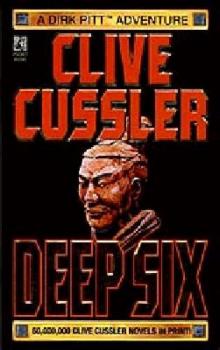 Deep Six
Deep Six Odessa Sea
Odessa Sea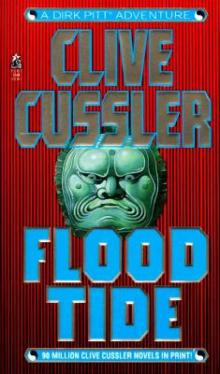 Flood Tide
Flood Tide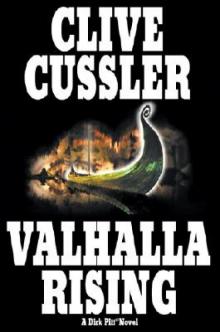 Valhalla Rising
Valhalla Rising Thriller 2
Thriller 2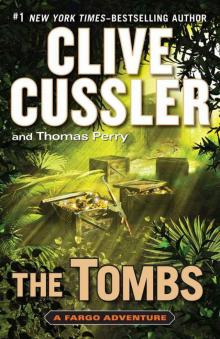 The Tombs
The Tombs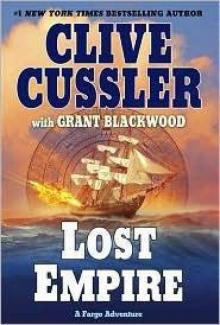 Lost Empire
Lost Empire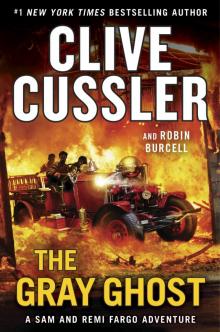 The Gray Ghost
The Gray Ghost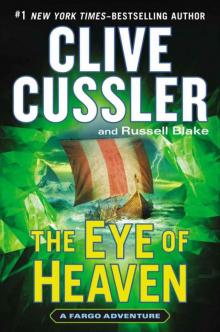 The Eye of Heaven
The Eye of Heaven Polar Shift
Polar Shift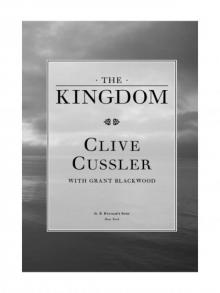 The Kingdom
The Kingdom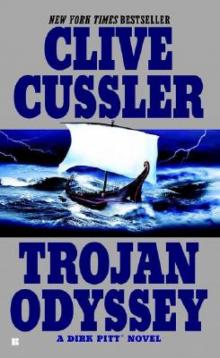 Trojan Odyssey
Trojan Odyssey Shadow Tyrants
Shadow Tyrants Nighthawk
Nighthawk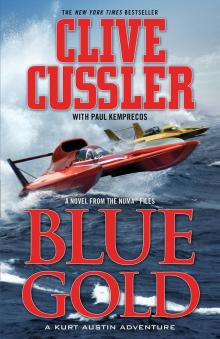 Blue Gold
Blue Gold Serpent
Serpent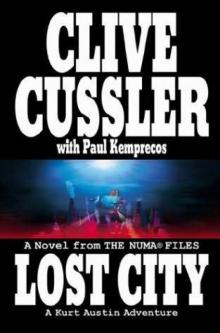 Lost City
Lost City The Gangster
The Gangster White Death
White Death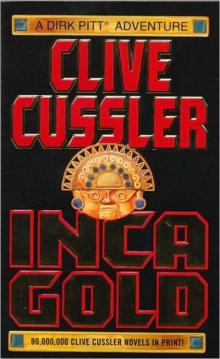 Inca Gold
Inca Gold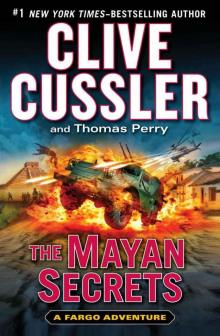 The Mayan Secrets
The Mayan Secrets The Pharaoh's Secret
The Pharaoh's Secret The Emperor's Revenge
The Emperor's Revenge Corsair
Corsair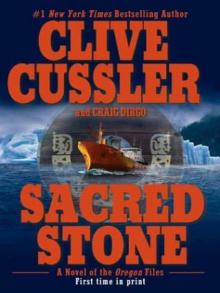 Sacred Stone
Sacred Stone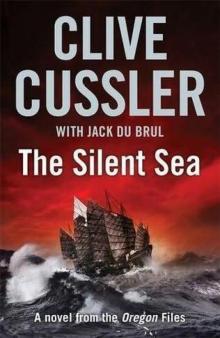 The Silent Sea
The Silent Sea The Rising Sea
The Rising Sea Black Wind
Black Wind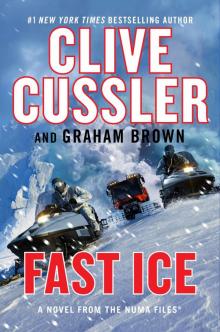 Fast Ice
Fast Ice Ghost Ship
Ghost Ship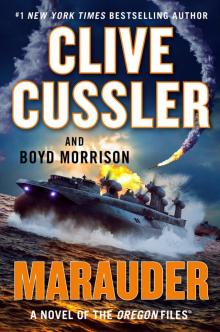 Marauder
Marauder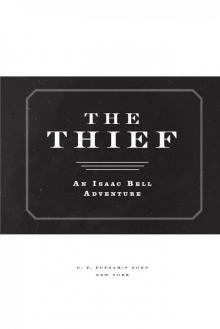 The Thief
The Thief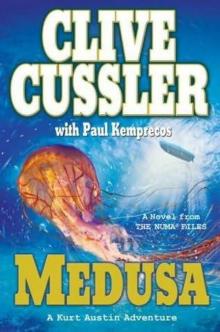 Medusa
Medusa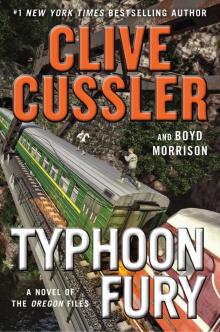 Typhoon Fury
Typhoon Fury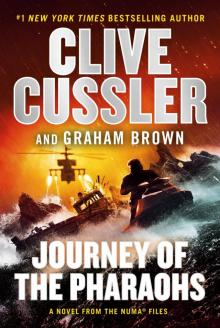 Journey of the Pharaohs
Journey of the Pharaohs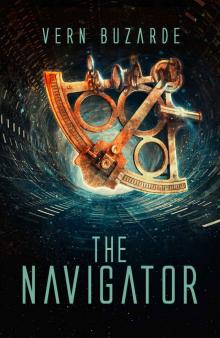 The Navigator
The Navigator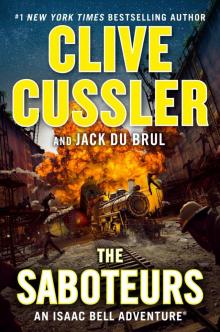 The Saboteurs
The Saboteurs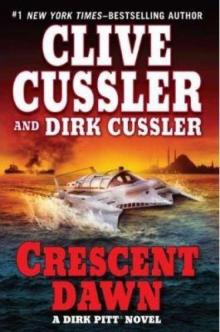 Crescent Dawn
Crescent Dawn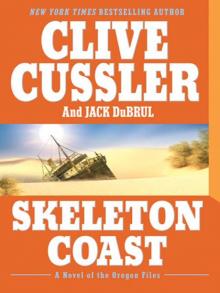 Skeleton Coast
Skeleton Coast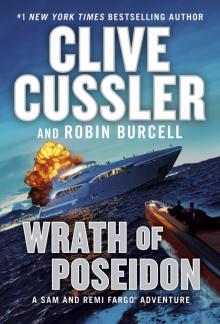 Wrath of Poseidon
Wrath of Poseidon The Mediterranean Caper
The Mediterranean Caper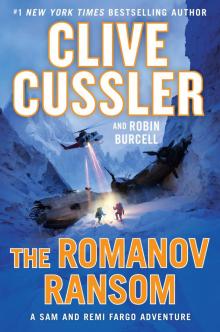 The Romanov Ransom
The Romanov Ransom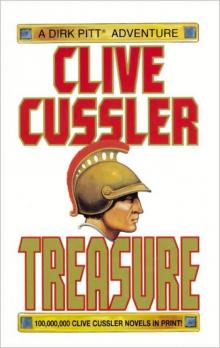 Treasure
Treasure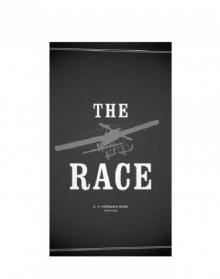 The Race
The Race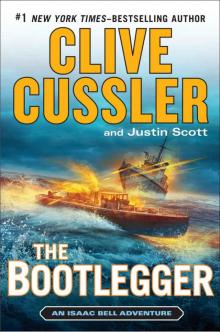 The Bootlegger
The Bootlegger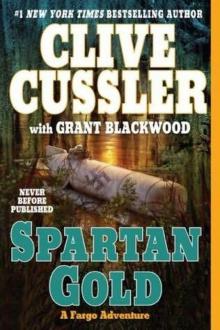 Spartan Gold
Spartan Gold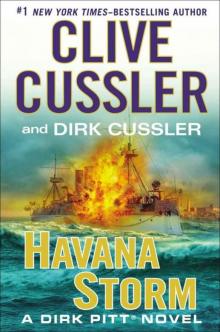 Havana Storm
Havana Storm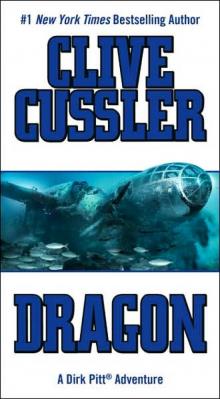 Dragon
Dragon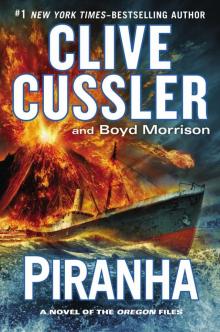 Piranha
Piranha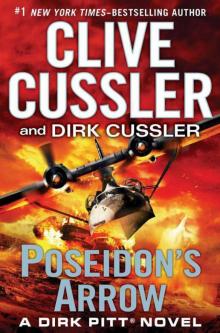 Poseidon's Arrow
Poseidon's Arrow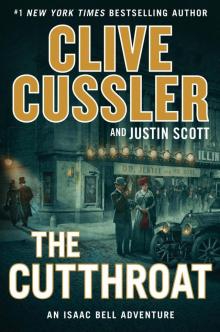 The Cutthroat
The Cutthroat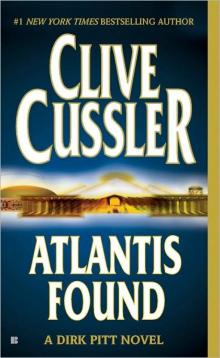 Atlantis Found
Atlantis Found The Jungle
The Jungle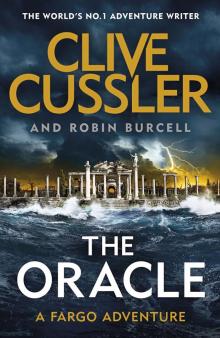 The Oracle
The Oracle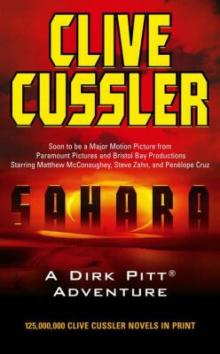 Treasure / Dragon / Sahara: Clive Cussler Gift Set
Treasure / Dragon / Sahara: Clive Cussler Gift Set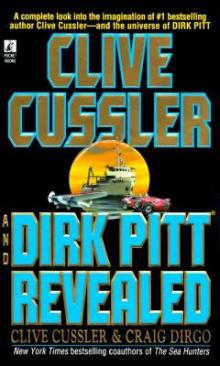 Clive Cussler and Dirk Pitt Revealed
Clive Cussler and Dirk Pitt Revealed The Sea Hunters
The Sea Hunters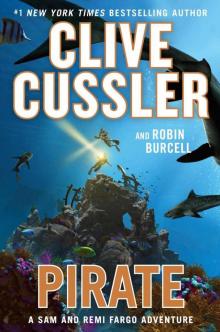 Pirate
Pirate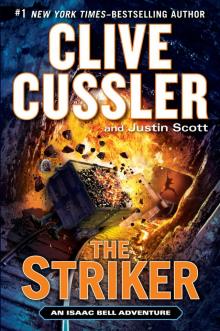 The Striker
The Striker Plague Ship
Plague Ship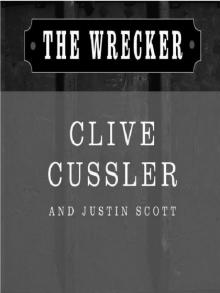 The Wrecker
The Wrecker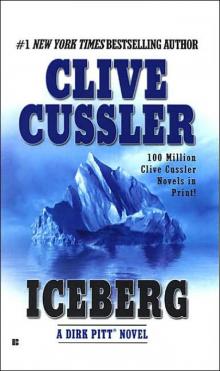 Iceberg
Iceberg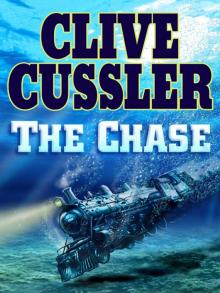 The Chase
The Chase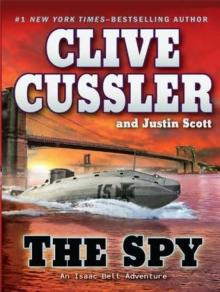 The Spy
The Spy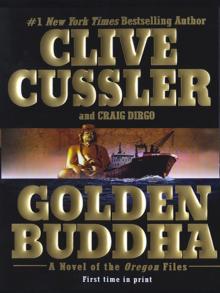 Golden Buddha
Golden Buddha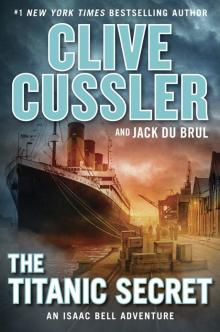 The Titanic Secret
The Titanic Secret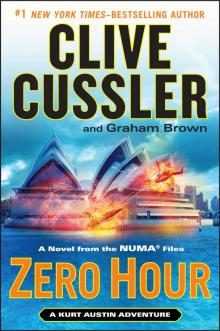 Zero Hour
Zero Hour Fire Ice
Fire Ice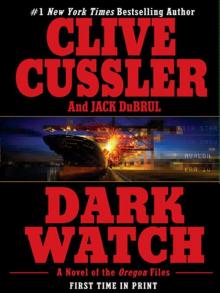 Dark Watch
Dark Watch The Storm
The Storm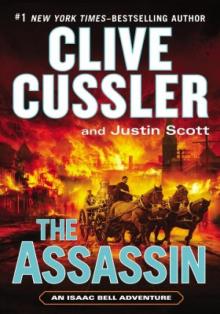 The Assassin
The Assassin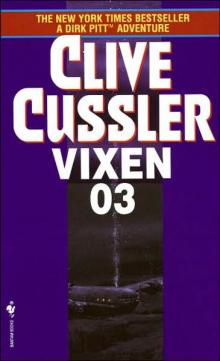 Vixen 03
Vixen 03 Arctic Drift
Arctic Drift Night Probe!
Night Probe! Cyclops
Cyclops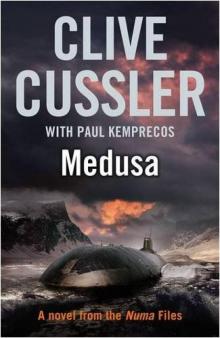 Medusa nf-8
Medusa nf-8 Shock Wave dp-13
Shock Wave dp-13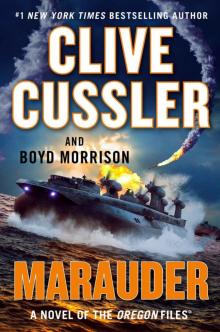 Marauder (The Oregon Files)
Marauder (The Oregon Files)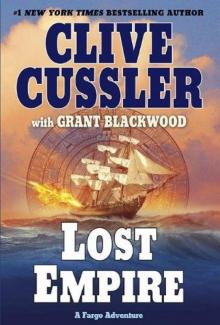 Lost Empire fa-2
Lost Empire fa-2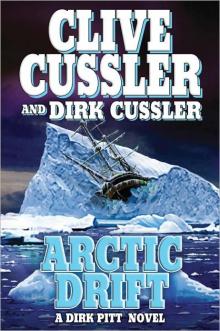 Arctic Drift dp-20
Arctic Drift dp-20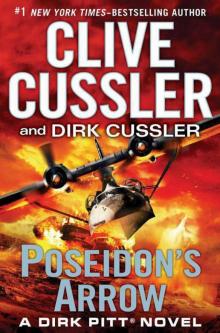 Dirk Pitt 22 - Poseidon's Arrow
Dirk Pitt 22 - Poseidon's Arrow Treasure of Khan dp-19
Treasure of Khan dp-19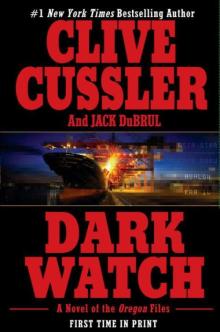 Dark Watch of-3
Dark Watch of-3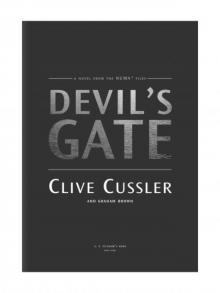 Devil's Gate
Devil's Gate The Sea Hunters II: More True Adventures with Famous Shipwrecks
The Sea Hunters II: More True Adventures with Famous Shipwrecks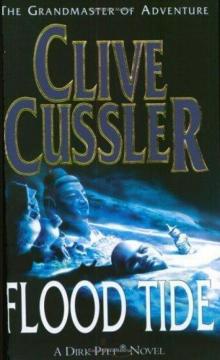 Flood Tide dp-14
Flood Tide dp-14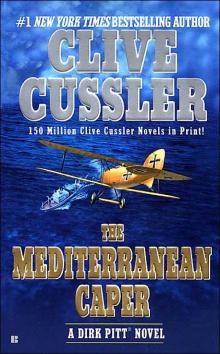 The Mediterranean Caper dp-2
The Mediterranean Caper dp-2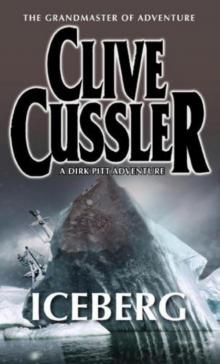 Iceberg dp-3
Iceberg dp-3 Sahara dpa-11
Sahara dpa-11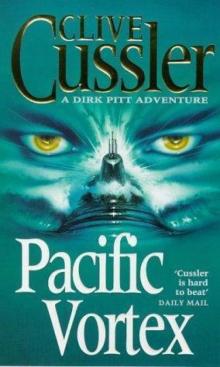 Pacific Vortex! dp-1
Pacific Vortex! dp-1 Deep Six dp-7
Deep Six dp-7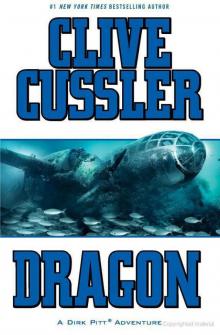 Dragon dp-10
Dragon dp-10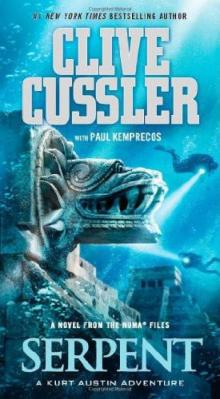 Serpent nf-1
Serpent nf-1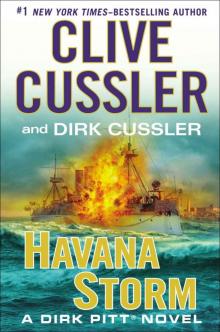 Havana Storm (Dirk Pitt Adventure)
Havana Storm (Dirk Pitt Adventure)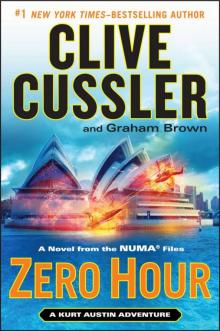 Zero Hour nf-11
Zero Hour nf-11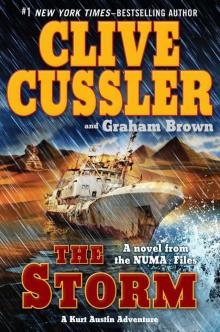 The Storm nf-10
The Storm nf-10 The Thief ib-5
The Thief ib-5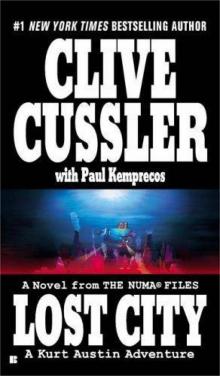 Lost City nf-5
Lost City nf-5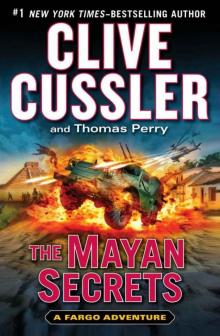 The Mayan Secrets fa-5
The Mayan Secrets fa-5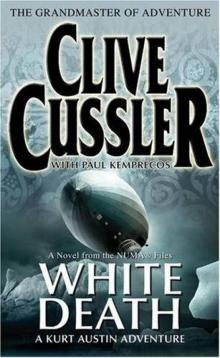 White Death nf-4
White Death nf-4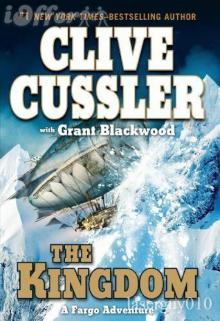 The Kingdom fa-3
The Kingdom fa-3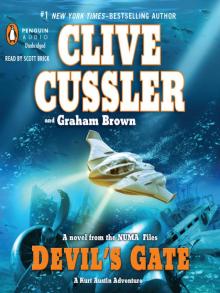 Devil's Gate nf-9
Devil's Gate nf-9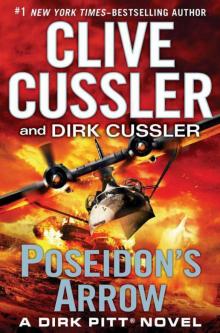 Poseidon's Arrow dp-22
Poseidon's Arrow dp-22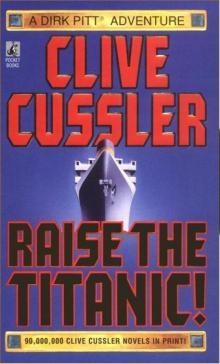 Raise the Titanic dp-4
Raise the Titanic dp-4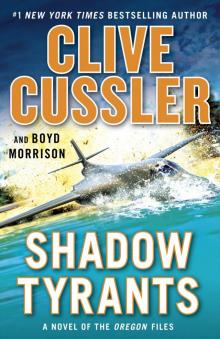 Shadow Tyrants--Clive Cussler
Shadow Tyrants--Clive Cussler Sacred Stone of-2
Sacred Stone of-2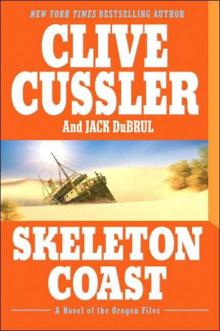 Skeleton Coast tof-4
Skeleton Coast tof-4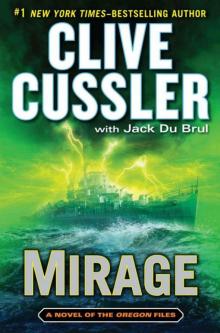 Mirage tof-9
Mirage tof-9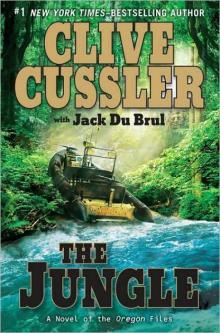 The Jungle of-8
The Jungle of-8 The Emperor's Revenge (The Oregon Files)
The Emperor's Revenge (The Oregon Files)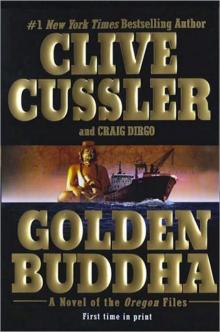 Golden Buddha of-1
Golden Buddha of-1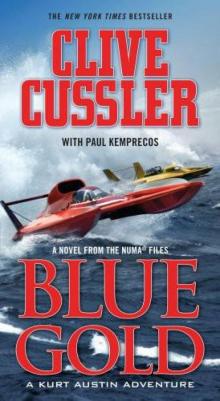 Blue & Gold
Blue & Gold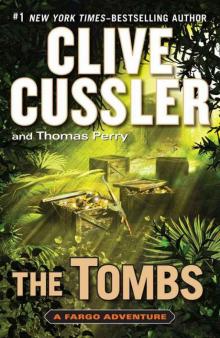 The Tombs fa-4
The Tombs fa-4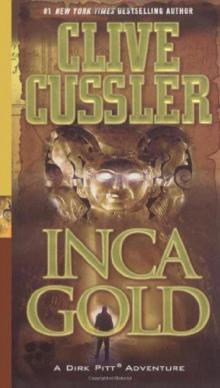 Inca Gold dp-12
Inca Gold dp-12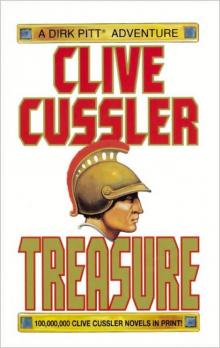 Treasure dp-9
Treasure dp-9 Atlantis Found dp-15
Atlantis Found dp-15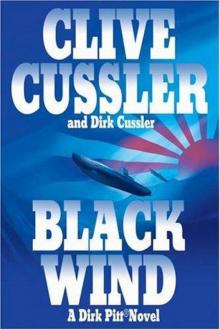 Black Wind dp-18
Black Wind dp-18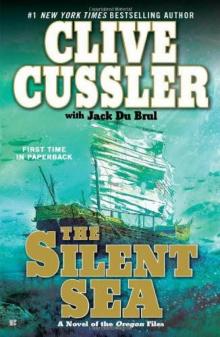 the Silent Sea (2010) tof-7
the Silent Sea (2010) tof-7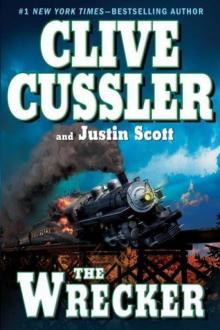 The Wrecker ib-2
The Wrecker ib-2 Fire Ice nf-3
Fire Ice nf-3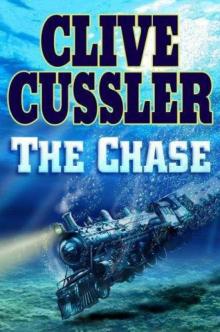 The Chase ib-1
The Chase ib-1 Sahara
Sahara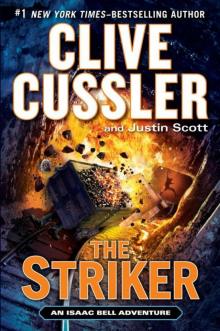 The Striker ib-6
The Striker ib-6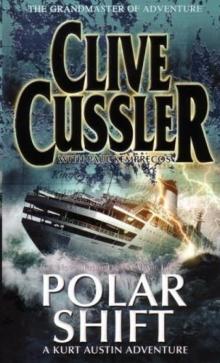 Polar Shift nf-6
Polar Shift nf-6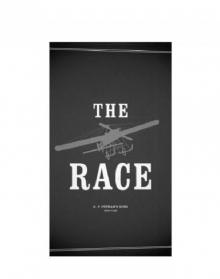 The Race ib-4
The Race ib-4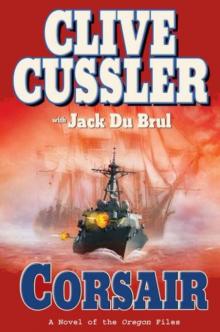 Corsair of-6
Corsair of-6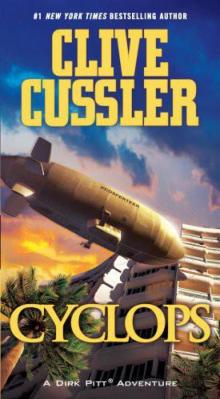 Cyclops dp-8
Cyclops dp-8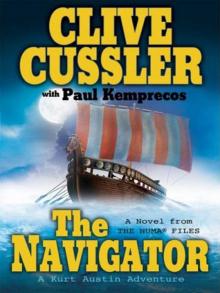 The Navigator nf-7
The Navigator nf-7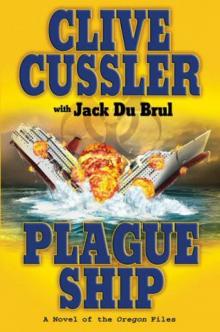 Plague Ship tof-5
Plague Ship tof-5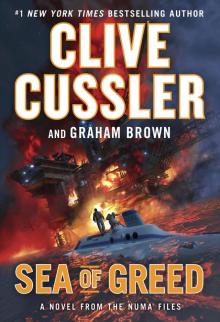 Sea of Greed
Sea of Greed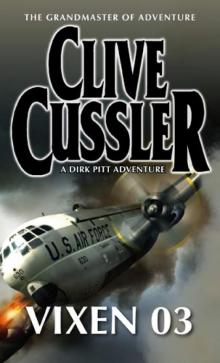 Vixen 03 dp-5
Vixen 03 dp-5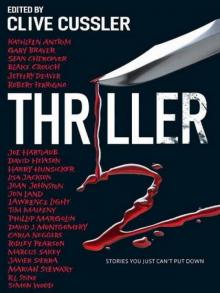 Thriller 2: Stories You Just Can't Put Down
Thriller 2: Stories You Just Can't Put Down